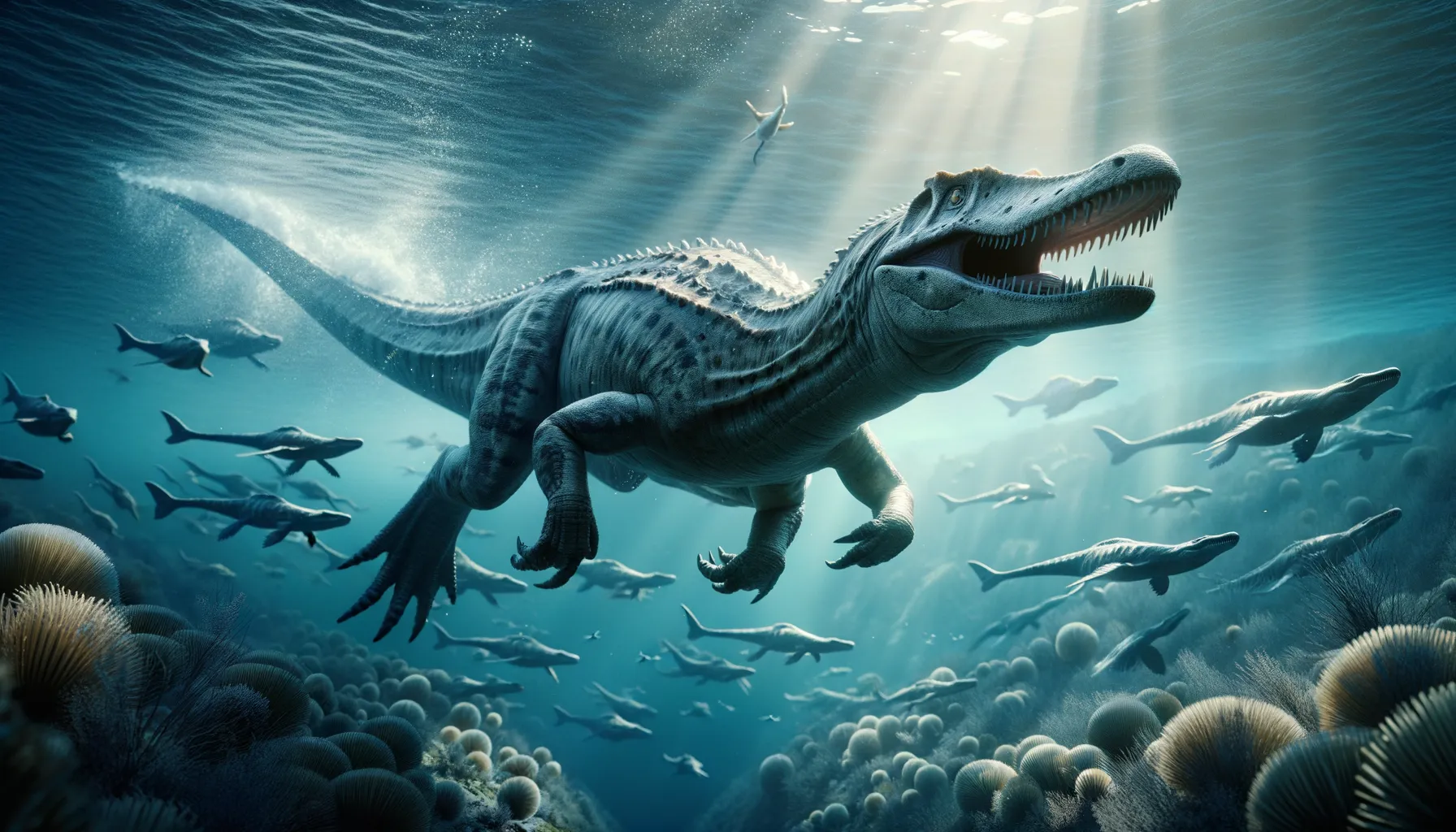
Dakosaurus
The sleek hunter of ancient seas.
Period
Jurassic
Length
Estimated length is up to 4 meters.
Height
Estimated height is about 1.5 meters at the shoulder.
Weight
Estimated to weigh around 1 to 2 tons.
Dakosaurus was a formidable marine predator during the Jurassic period. It had a sleek, streamlined body that allowed it to navigate swiftly through the waters of ancient seas. With a crocodile-like appearance, it had powerful jaws and sharp teeth suitable for catching prey. Fossil evidence suggests that Dakosaurus was an active predator, feeding on a variety of marine organisms.
Diet
Dakosaurus was a carnivore, preying on fish and other marine life. Its powerful jaws and sharp teeth were well adapted for grasping slippery prey in the ocean.
Hunting
Dakosaurus likely utilized ambush tactics, waiting for prey to come close before striking quickly. Its streamlined body suggests it could accelerate rapidly to catch faster-moving prey.
Environmental challenges
Dakosaurus lived in a competitive marine ecosystem with various predators and prey. It faced challenges from changes in sea levels and temperatures, which could affect prey availability. Additionally, shifts in ocean currents or volcanic activity might have impacted its habitat, causing it to adapt or move to new areas.
Speed
Believed to be fast in water due to strong tail.
Lifespan
Estimated to be around 15 to 25 years.
First discovery
First discovered in the mid-19th century in Germany.
Fun Facts
- Dakosaurus was a marine reptile, not a dinosaur, that lived during the Late Jurassic to the Early Cretaceous period.
- It had a unique appearance with a crocodile-like body and a head that was more similar to that of a dinosaur.
- Dakosaurus is known for its serrated teeth, which were adapted for efficiently slicing through the flesh of its prey.
- It was a top predator in the ocean and likely hunted fish and other marine reptiles.
- The name Dakosaurus means 'biter lizard,' highlighting its formidable jaws.
- Fossils of Dakosaurus have been found in Europe and South America, indicating a wide geographic range.
- Despite its fearsome appearance, Dakosaurus shared its ecosystem with other giant marine reptiles, like plesiosaurs and ichthyosaurs.
Growth and Development
Dakosaurus hatched from eggs and grew rapidly to reach maturity. The growth rate may have been influenced by environmental factors such as food availability. During juvenile stages, Dakosaurus likely stayed in safer, shallower waters before moving into deeper areas as they matured.
Habitat
Thrived in warm, shallow seas that covered large parts of present-day Europe. These marine environments were rich with diverse species, providing ample prey for Dakosaurus. The habitat included coral reefs and coastlines, which were ideal for its ambush hunting strategies.
Interaction with other species
Competed with other marine reptiles for food, including larger predators. Its presence influenced the distribution of smaller marine life due to its predatory habits. Dakosaurus may have had a niche role, focusing on specific prey to reduce competition.
Natural lifespan
In natural circumstances, Dakosaurus lived up to 25 years.
Reproduction
Dakosaurus reproduced by laying eggs, probably on sandy shores. Parental care is uncertain, but young Dakosaurus were likely independent shortly after hatching.
Social behaviour
Little is known about its social behavior, but it may have been solitary like modern crocodilians. Temporary groupings could have occurred during feeding or mating seasons.
Fossil locations
Fossils have been discovered in Europe, primarily in Germany. These fossils provide insight into its morphology and ecological role in the ocean. Modifications in its skull structure have been key to understanding its predatory capabilities.
